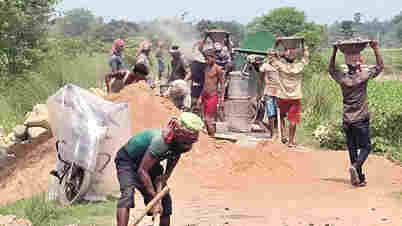The Adi Shankara and Plato had a deep mistrust of change. While Plato called for arresting change, in Vedanta philosophy, change is relegated to Maya; it is also Brahman, with its quality of permanence, which is the ultimate reality. In contrast, change and progress are essential characteristics of modernity. However, there is a large gap between the pace of change in the West as compared to that in India.
Over the years, there has been significant progress in India in terms of reducing poverty, expanding the health sector, spreading literacy, building infrastructure, creating affordability, and providing opportunities for and access to a better lifestyle. However, the rate of progress still remains far slower than it is in the West. This is frustrating for the promoters of progress — particularly the modern State — that would like to see India change as rapidly as some of the developed countries. While corruption and a lack of seriousness and professionalism are some of the obvious reasons for the variance in the pace of growth, we also need to explore the other underlying reasons.
Unlike the modern West, a large part of India, especially the villages, still remains within the premodern domain. Cities — the metropolises — are India’s symbols of modernity, providing a higher quality of education, health and lifestyle. However, even these cities do not meet the criteria of a modern city in the West. They are more like “ancient cities”, that, according to Descartes, the father of modern philosophy, often grow “gradually” from “mere villages into large towns”. They are characterized by “ill-proportioned” buildings arranged in a haphazard manner — “a tall one here, a small one there”, making “the streets crooked and irregular”. In contrast, according to him, modern cities are “orderly towns which planners lay out” and “built with the will of men using reason”. Thus, most cities in India, except perhaps Chandigarh, cannot be considered modern when compared to modern cities in the West. In addition, Indian society consists of villages and communities, and follows customary morality, faiths and beliefs, and traditional habits.
In contrast to this, individualism, instrumental rationality, and causality are the foundations of modernity in the West. Western society first followed the path of the premodern and then moved on to the modern in a sequential manner, with a clear disjuncture between the two, as noted by Descartes. The Social Contract philosophers’ idea of “state-of-nature” reiterates this. However, in India, the premodern is in conjunction with the modern. In his essay, “City and Village”, Rabindranath Tagore recognizes the coexistence of modern cities alongside premodern villages in India: “people have their home in the village and their offices in the city.” Thus, unlike the homogeneity between the premise and the conclusion in the West, it is heterogeneity that characterizes India. This is the reason for the difference in the pace of modernity between India and the West.
It is important that we accept this dissimilarity and refrain from making direct comparisons with the West. India may want to emulate the West but it will always be different. Is there, however, a choice beyond either trying to seriously understand the situation in India or, upon finding it too big a liability, abandoning the pursuit of modernity altogether? Perhaps we may consider a third option: to reduce the liability and begin modernizing India. This would call for serious deliberation and the will to take on a colossal responsibility.
The premodern has a dominant representation in India and needs to be studied extensively. This huge task is made doubly difficult by the lack of any reliable data. The West no longer has to face this issue in its own societies although it did deal with such issues in the past in its erstwhile colonies in Asia and Africa. However, the data that it generated through studies on India at the time are either outdated or insufficient. We need to identify important areas to study and devise methods to generate data on India, especially in agriculture and education. It will be futile to attempt modernizing Indian society without sufficient data on the premodern.
It would be a tremendous resource for modern projects in India if educational institutions could focus on generating comprehensive data on various aspects of India. For instance, studying existing roads before laying highways will not only create better linear connectivity but also integrate already operational roads with the new construction for a more efficient, holistic roadway system. Similarly, a careful study of the current state of the primary education and healthcare systems before implementing any improvements will help integrate new reforms with the existing facilities for a more modern system. The premodern on the horizontal axis, therefore, needs to be connected to the modern projects on the vertical axis.
This direction will also give us a clear sense of the country’s priorities like eradicating poverty, improving primary health and education, and developing the agriculture sector. These priorities are either inverted or are disproportionate in the developmental models followed in India today and the Indian State needs to urgently embark on a course correction. For instance, often, it is only after a modern project is initiated or built that people start finding out about it and finally begin to access it. This drastically lowers the pace and negatively affects the success of these projects.
The people of India have energy, perseverance, and a remarkable ability to adapt to changing situations. Their strengths and skills need to be assessed and factored in while planning future growth. This may initially seem cumbersome and time-consuming. However, blindly borrowing modern models from the West without tailoring them for the Indian situation will only result in modernity at a superficial, elitist level akin to drawing conclusions from outside premises. But customizing modernity to suit the specific needs of Indian life can turn liabilities into assets and form a new unique model. This will ensure that we continue on the path of modern progress and, at the same time, avoid its pitfalls.
A. Raghuramaraju teaches philosophy at the Indian Institute of Technology Tirupati










